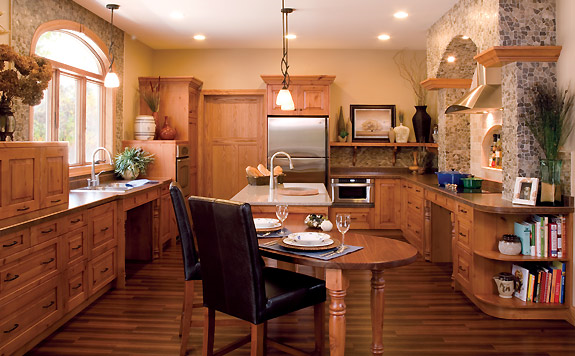A revolution in building design standards is long overdue. Our current building design standards do not address the needs of more than one third of our existing population. Many more people can greatly benefit from accessible design versus conventional design. Our rapidly aging population is experiencing the limitations of our personal living environments and elder living solutions are becoming a problem. Any evolution in building practically always begins in the common areas of the commercial building sector. The American Disabilities Act of 1990 increased the attention needed for those people having the right to equally access their work place and any recreational or leisure facilities. These rules at least offer minimal solutions for those needing the most help with any building access. In Austin, we now must provide access to one bathroom on the first floor in new homes as deemed by our newly adopted building regulations. This basic right to an accessible bathroom is finally being enforced by the city's building inspectors. What a tremendous needed and basic design improvement!
Aging in place design, construction, and remodeling has become synonymous with handicap accessible home design and modification during our lifetime. Home modifications using aging in place design techniques can be used to accommodate anyone from people with mobility impairments to those with vision loss, hearing loss, or even cognitive or developmental disabilities. Accessibility home modifications or wheelchair accessible kitchen and bathroom remodeling in Austin will allow anyone with limited mobility within your home to feel more empowered and independent. The extent of a customized accessibility design is dependent upon the activity level of the person requiring the modifications.
If you have been paying attention to the medical news concerning our society you are well aware we are living longer than just a few decades ago. As a result, our senior populations requiring elder construction and remodeling are expanding and most people will experience health issues that are most common among the elderly. Most seniors will reach a point in their lives when they require specialized home environments to safely retain their independence. No longer are the labels of "abled" and "disabled" so defined once the issue of aging is brought to light in our society. Physical conditions, activities, and architectural barriers culminate in what is known as disabilities. Each contribute their part in forming this complex phenomenon. Disability is now a cultural milestone and certainly not viewed as just a personal problem within our society.
Physical limitations affect many more people than the daily users of walkers and wheelchairs. Many members of our life experienced or elder society have significant problems in dealing with their home environment. Todays conventional building standards conflict with most people's accessibility when you consider our created architectural barriers concerning cabinetry and door opening widths, individual strength, range of motion, movement, manual dexterity, balance, and coordination . Once the demands of our built environment exceed their capacities we become excluded from a room or even the entire home. The building world must work in unison to be sure the entire living environment meets basic needs in addition to affordability and structural integrity for the consumer and home owner. This includes both the home and the components within the home being accessible to all inhabitants. Privacy, sense of belonging, sense of control, and the sense of safety and security make up the quality of life for any home and should be considered for any design.
We now need a new vision of a home that works for everyone and this attitude is becomming the new reality stemming from the revolution. The new building revolution of universal design. The new accessible homes are being created along with ways to make the older homes more accessible through the use of CAPS certified remodeling. This new way of thinking is enabling aging in place to become a reality for our new older majority of homeowners, a group where disability is a fact of life.
Accessible Home Designs In Austin, Texas













